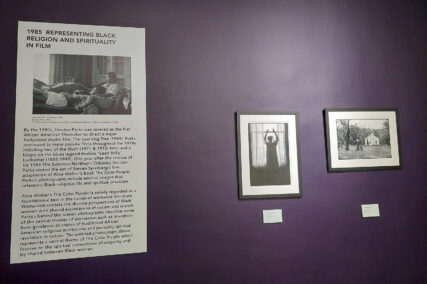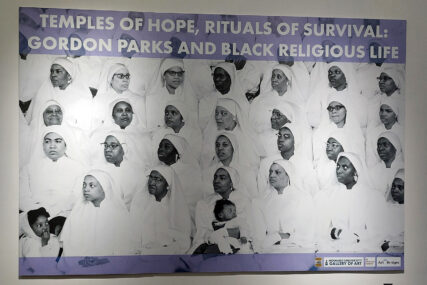
WASHINGTON (RNS) — A new exhibition of the work of Gordon Parks, a photographer renowned for documenting African American life, turns its focus on Parks’ exploration of Black religion and spirituality.
“Although Gordon Parks’s personal religious beliefs vacillated across his lifetime, he applied a working knowledge of Black religious culture with a commitment to humanism as an approach to documentary photography and photojournalism,” reads the introductory wall text for “Temples of Hope, Rituals of Survival: Gordon Parks and Black Religious Life” at Howard University in Washington.
The exhibition, which runs through Dec. 1, is a collaboration between the Gordon Parks Foundation and Howard, whose Moorland-Spingarn Research Center acquired a collection of 244 of Parks’ photos from the foundation in 2022.
The more than 40 photos and artifacts on display at Howard highlight the life and leaders of the Black church, the Nation of Islam and broader Black spirituality over the course of Parks’ half-century of work as a photographer, in which he became a chronicler first of Black working people and street life and later of the Civil Rights Movement. Parks, who died in 2006 at age 93, also made his mark as a filmmaker, musician and writer.
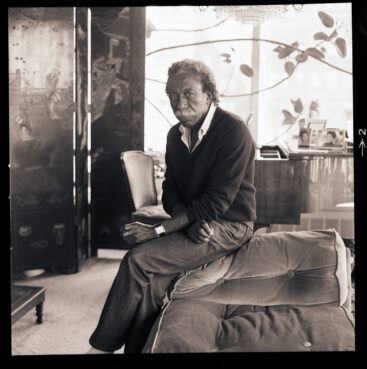
Photographer Gordon Parks in the late 1980s. (Photo ©David Finn Archive, Department of Image Collections, National Gallery of Art Library, Washington, DC)
The exhibition reflects Parks’ particular interest in portraits, and many of the images at Howard show individuals, known, lesser known and unknown, who represent the range of Black religious traditions.
One of the people featured is Ella Watson, the subject of what is perhaps Parks’ most famous portrait, “American Gothic.” Watson, a federal government custodian, is pictured in a 1942 portrait in front of an American flag, holding a broom in her right hand and a mop in her left, in a pose reminiscent of a 1930 painting of Iowa farmers by Grant Wood.
PHOTO GALLERY: The history and diversity of African American religious rituals
The exhibition also includes images of Watson, a member of a Spiritualist church in Washington, receiving an anointment in one and, in the other, caring for children in view of a home shrine that features saintly figures and a Bible.
In a recent interview, Melanee C. Harvey, an associate professor at Howard who has made Parks a focus of her scholarship and who curated the exhibition, said that, before his arrival in D.C., Black photographers there, notably those at the Scurlock Studio, preferred posed portraits. Parks, she said, chose “a different approach, of him documenting it as he’s witnessing it, versus the more studio business approach.”
Mostly self-taught, Parks captured the lives of Americans while working for the Farm Security Administration in the 1940s as the agency sought to aid farmers and migrant workers in the wake of the Great Depression. He moved on to work for prominent magazines, including Ebony and Vogue, before he became a staff photographer for Life magazine for more than 20 years.
It was while he was working for Life that Parks produced a 1953 series of photos exploring the ministry of the Rev. Ernest Franklin Ledbetter Sr. and his Metropolitan Missionary Baptist Church in Chicago, a more than 100-year-old church on the city’s west side. “They had a stately structure, it was filled to the brim every Sunday, and they had a lasting impact in terms of the social gospel ministries,” said Harvey, who edited a book containing the series that will be released in December.
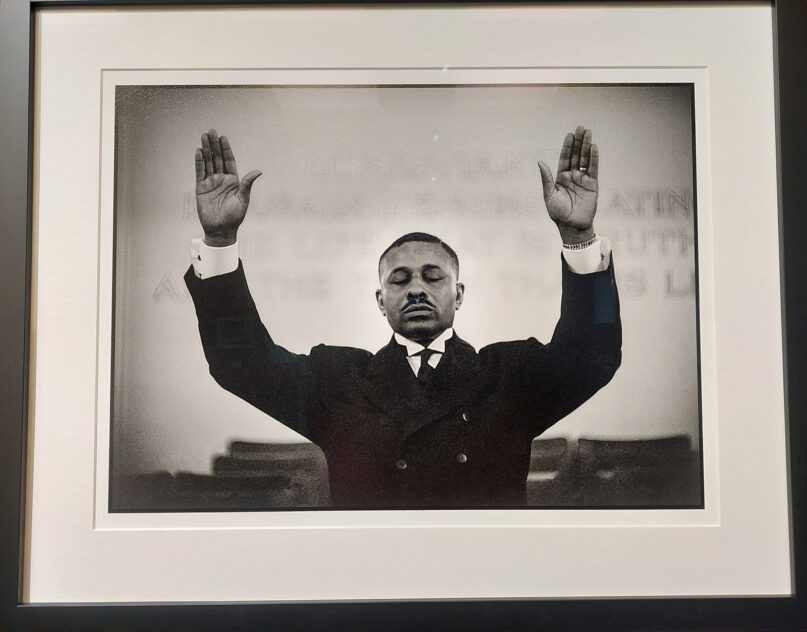
Photo of Pastor E.F. Ledbetter in the “Temples of Hope, Rituals of Survival: Gordon Parks and Black Religious Life” exhibition at the Howard Museum in Washington, D.C. (RNS photo/Adelle M. Banks)
Parks’ photos show Ledbetter, known for his dramatic sermons, preaching from the pulpit to the packed sanctuary of the large church. In one, his arms are outstretched as a white-uniformed usher stands at a distance behind him at attention, her left arm tucked behind her.
“It is a temple of hope to thousands of Negro people caught in the backyard of this vast city,” Parks wrote in an unpublished essay about the church. “It is a haven in a world of unending trouble. It offers leadership and a powerful-preaching minister.”
Harvey said Parks also recorded images of women doing the more prosaic work of ministering to people on Chicago’s streets. One woman, Beatrice Williams, “would go around the community and minister to the drunks, the children, those marginalized in society,” said Harvey, with Parks trailing her with his camera.
Ariel Rainey, a visitor to the exhibition from Chicago, said the images reminded her of decades past in her hometown and stories of church life she heard from her mother. “The Malcolm Xes, the Ledbetters and all these different people were actually in our community,” said Rainey, an activist who has supported inner-city mothers who have lost their young children to gun violence. “And that’s what these pictures are showing. We have to go to the people.”
Life’s editors had sought for years to get images of the growing Nation of Islam movement, based in Chicago, and Parks was able to get permission from Elijah Muhammad, leader of the racially centered Muslim sect and a mentor to Malcolm X. Muhammad agreed only after Parks declined Muhammad’s offer of half a million dollars to leave Life and instead produce a movie about the movement.
The exhibition includes images from the 1960s of Malcolm X with leaders such as the Rev. Adam Clayton Powell Jr., then-pastor of New York City’s Abyssinian Baptist Church, and talking with his hand on the shoulder of a man at Temple No. 7 Restaurant in Chicago.
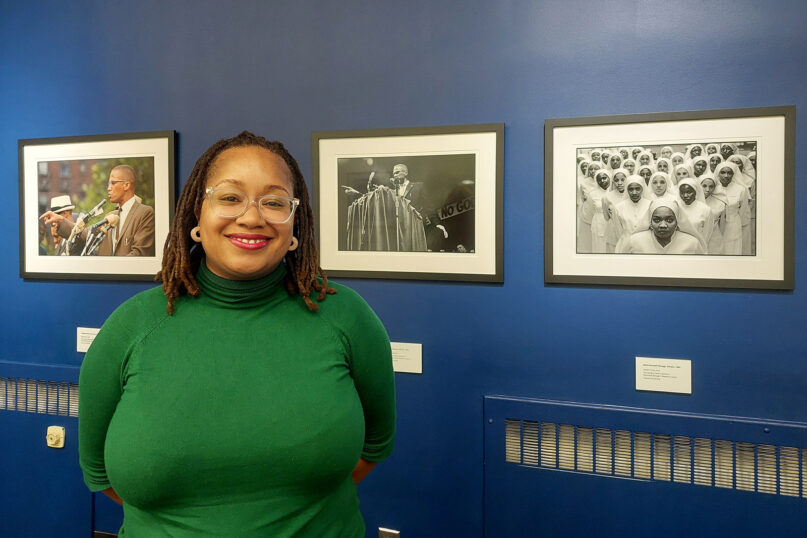
Melanee C. Harvey curated the “Temples of Hope, Rituals of Survival: Gordon Parks and Black Religious Life” exhibition at the Howard Museum in Washington, D.C. (RNS photo/Adelle M. Banks)
“He becomes so close to Malcolm X to the point where Gordon Parks is actually the godfather of one of Malcolm X’s daughters,” Harvey said. “Gordon Parks travels with Malcolm X to Chicago to Brooklyn, to Harlem and also Los Angeles to photograph the Nation.”
Having gained Malcolm X’s trust, Parks used the relationship to gain access to other figures and a wider Black culture. “He had a methodology of connecting with an individual that served as his kind of tour guide through this community,” Harvey said. Watson and Ledbetter served in those roles in the ’40s and ’50s, respectively.
Many of the images, Harvey pointed out, are without title, allowing the viewer to discern the story they have to tell by closer examination. She drew attention to a 1956 color photo showing two women talking, with one inside a church and the other standing at its window.
“Here we see two women look like they’re maybe gossiping or just exchanging important community information, but then when you look closer, you see that the woman inside the church is actually breastfeeding,” she said. “These very intimate, life-sustaining things happen in that space.”
The exhibition includes examples of Parks’ films and poetry, such as a 1984 poem titled “Homecoming” with its reference to the divine. “Gordon Parks was a Renaissance man — photography, filmmaking, and he also was an avid poet,” said Harvey. “He ends this poem by saying: ‘My hope now is that each of us can find what GOD put us here to find – LOVE!’”
The exhibition includes two self-portraits, as well as a group picture outside a Fort Scott, Kansas, church when Parks was 9. Harvey has identified it as an African Methodist Episcopal congregation.
RELATED: Black museum religion exhibit features Little Richard’s Bible, Rev. Ike’s suit
Harvey said she appreciated what she called “the serendipity of timing” that the exhibition opened in the current sociopolitical times of the nation.
“At a time where, especially in Washington, D.C, we’re experiencing a lot of gestures to change history, to whitewash history, this type of exhibition is kind of necessary,” she said. “It’s like serendipity or just perfect timing that this is offered as a kind of guidebook or a salve for this kind of moment.”
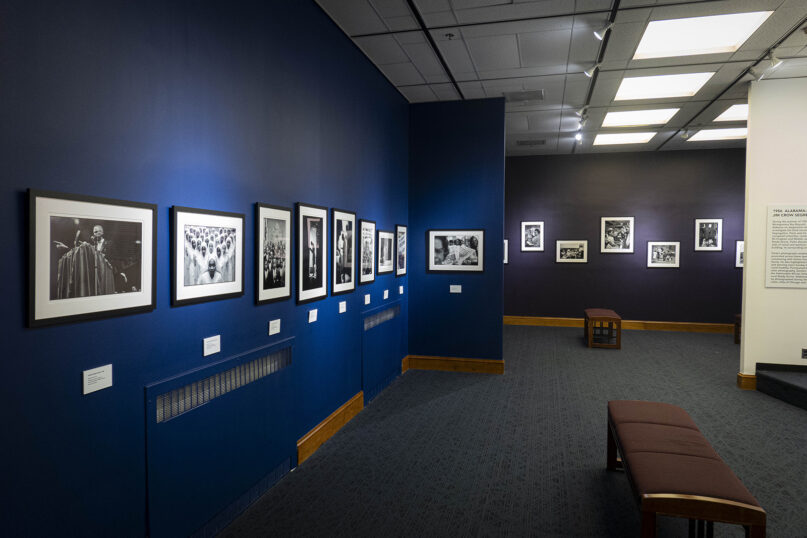
“Temples of Hope, Rituals of Survival: Gordon Parks and Black Religious Life” exhibition at the Howard Museum in Washington, D.C. (Photo by Jada Simone)

